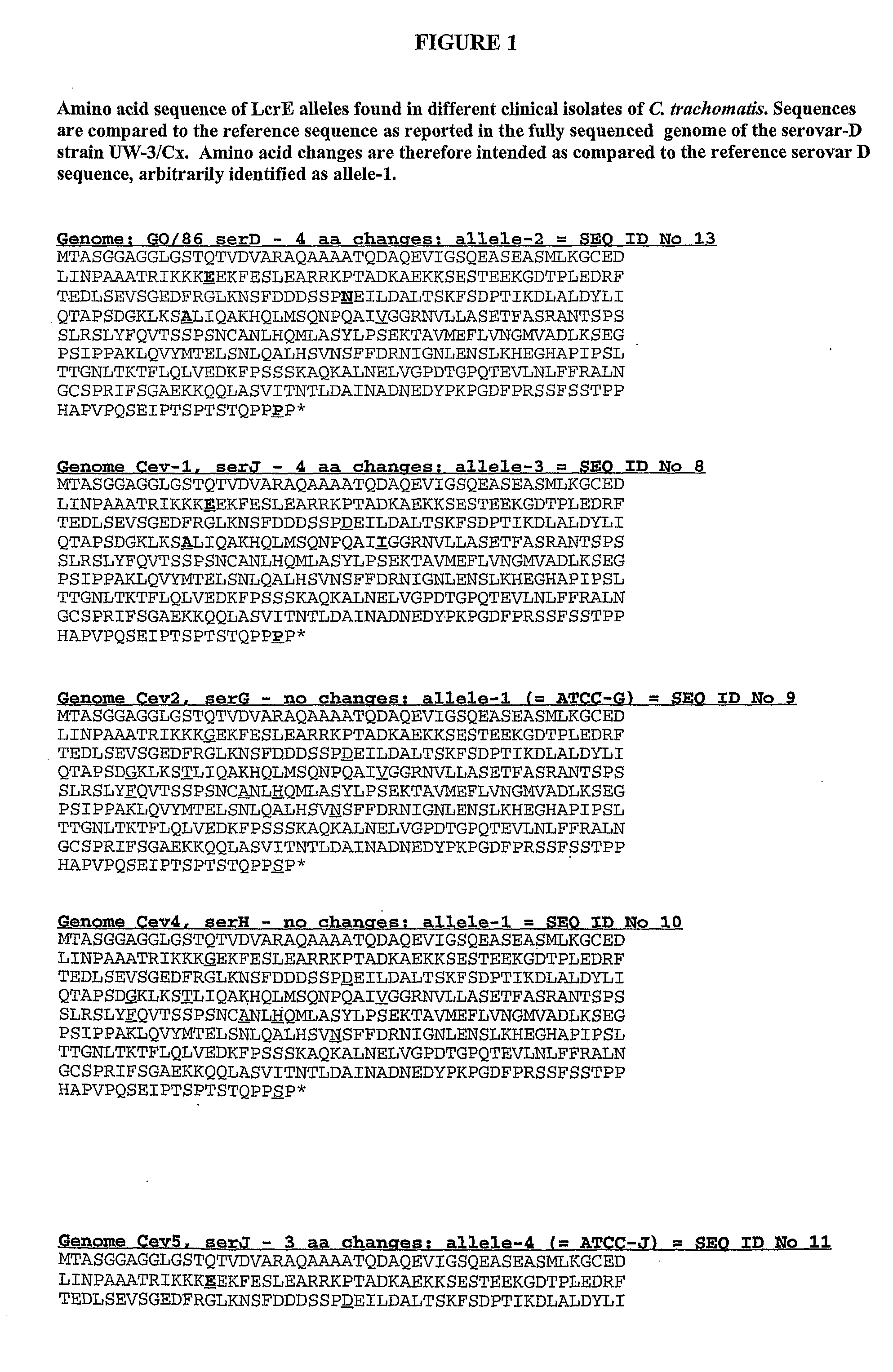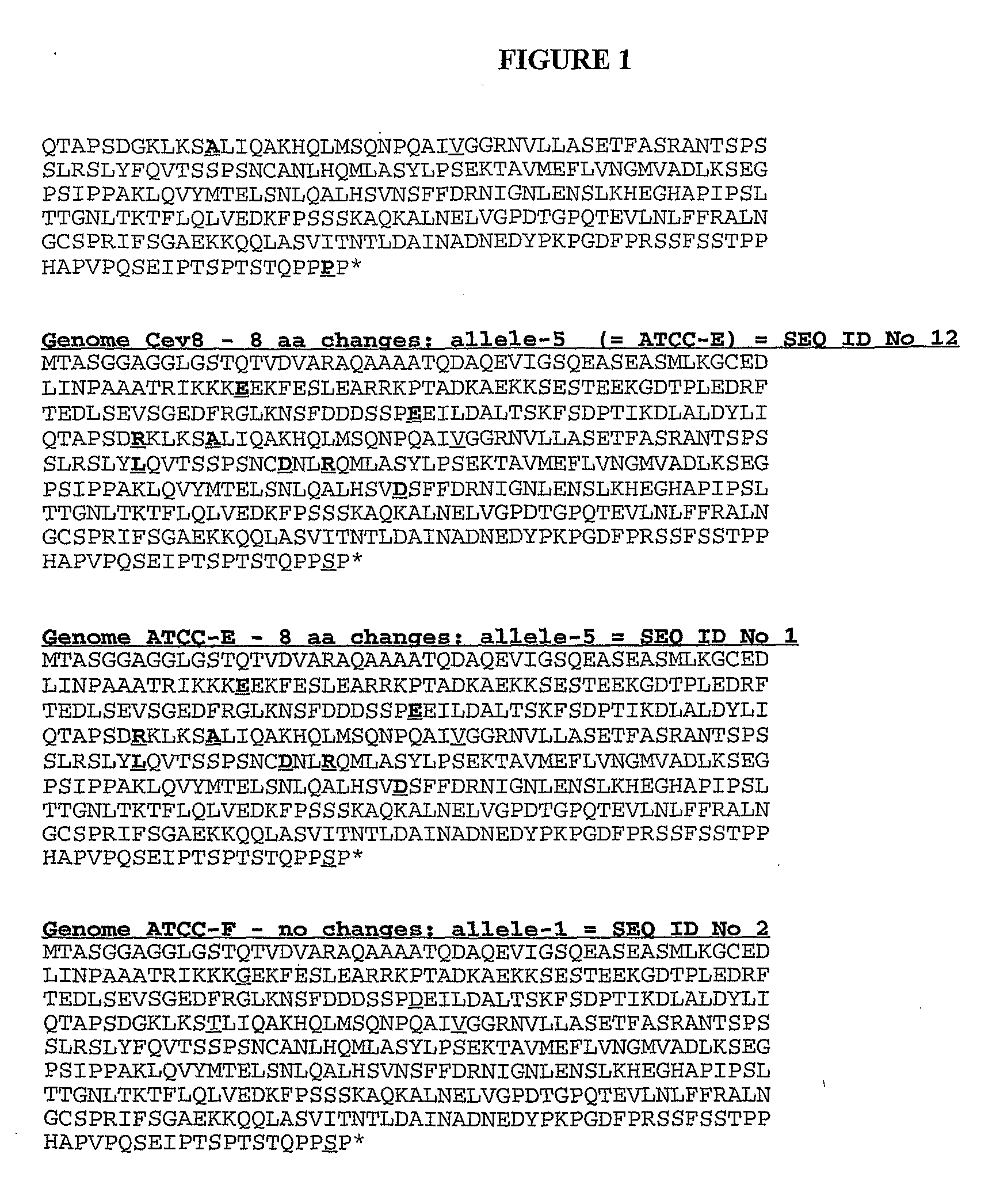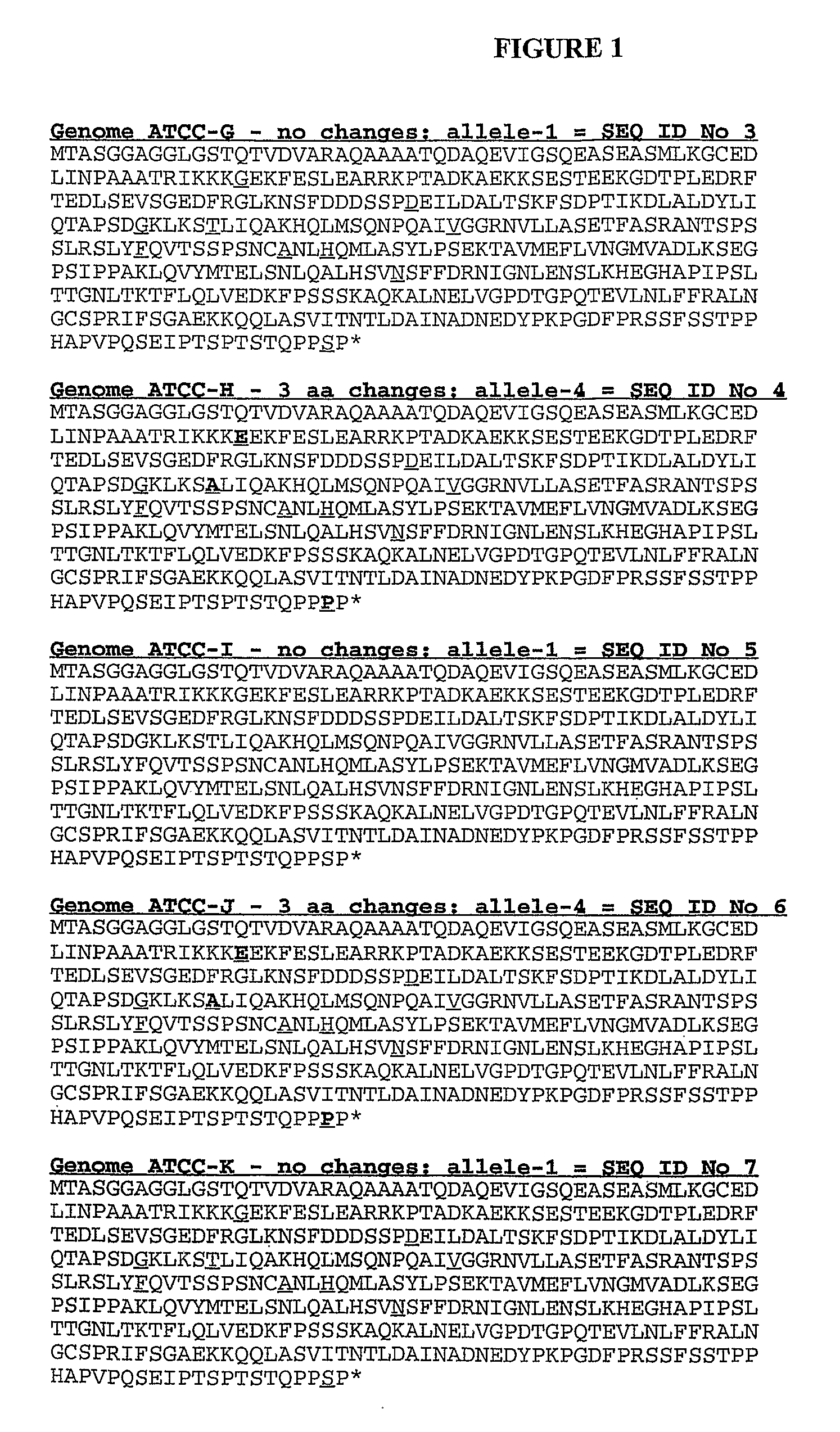Immunogenic compositions for Chlamydia trachomatis
a technology of compositions and compositions, applied in the field of immunology and vaccinology, can solve the problems of insufficient protection, sterility and blindness, and inability to carry out clinical trials, and achieve the effect of improving immunogenic compositions and immunogenic compositions
- Summary
- Abstract
- Description
- Claims
- Application Information
AI Technical Summary
Benefits of technology
Problems solved by technology
Method used
Image
Examples
example 1
Purpose of Example I
(i) to evaluate the degree of allelic variation of possible Chlamydia vaccine candidates in 13 Chlamydia trachomatis clinical isolates corresponding to eight different Chlamydia serovars; and
(ii) to evaluate the degree of antigenic variation in Chlamydial isolates which have, so far, been classified only on the basis of major outer membrane protein (MOMP) variants
Isolates Examined
8 isolates were obtained from the ATCC (American Type Culture Collection).
According to the ATCC catalogue these strains were isolated in the USA from patient genital or ocular swabs in the years ranging from 1959 and 1974.
Six Italian isolates belonging to 5 different prevalent Chlamydia serovars were also examined. These Chlamydial strains were isolated from patients with inflammation symptoms consistent with Chlamydia infection, the patients being examined at the Policlinico St. Orsola, Bologna, Italy in a time period approximately around 1998 to 2001.
These isolates were serotyped by de...
example 2
LcrE Epitope Mapping
The LcrE reference sequence from Chlamydia trachomatis. Strain D / UW-3 / CX is provided as SEQ ID NO: 28 (below) which also shows a summary of the all of the allelic mutation points detected in the various Chlamydia trachomatis serovar isolates: The underlined regions in SEQ ID No 28 surrounding the point mutations correspond with either B and / or T cell epitopic peptide regions. The first mutation point at residue 64—underlined in the following epitope region KKKGEK—corresponds with a high frequency mutation point or hypervariable region and is also likely to be associated with a T and / or B-cell epitope region.
Thus, mutation points detected in the isolates were at position 64, 126, 157, 162, 179, 207, 217, 220, 275, and 420 (see Table 7). Based on the observed mutations in the isolates, antigenic peptides were determined using the method of Kolaskar and Tongaonkar (Kolaskar et al., “A semi-empirical method for prediction of antigenic determinants on protein antigens...
example 3
Epitope Mapping for Chlamydia (eg LcrE) Antigens
Epitope mapping of all the LcrE serovar variants is carried out as follows: A mouse model of genital tract infection as described above and in WO 05 / 002619 is used. All the LcrE variants are expressed as recombinant proteins, methodology for which is also described in WO 05 / 002619. Mice are immunised with the recombinant LcrE variants (with and without Chlamydia trachomatis challenge). The spleen cells from immunised mice (with and without Chlamydia trachomatis challenge) are then isolated and pulsed with LcrE specific peptides, set out as SEQ ID Nos 47-98 below. The spleen cell response to each of LcrE specific peptides is then assessed in terms of the presence or absence of spleen cell proliferation, mediator response such as, for eg, Th1 or Th2 cell response as determined by various tests described above. A particularly preferred peptide for pulsing spleen cells and for evaluating the humoural and cellular immune response in a subje...
PUM
| Property | Measurement | Unit |
|---|---|---|
| Volume | aaaaa | aaaaa |
| Volume | aaaaa | aaaaa |
| Composition | aaaaa | aaaaa |
Abstract
Description
Claims
Application Information
 Login to View More
Login to View More - R&D
- Intellectual Property
- Life Sciences
- Materials
- Tech Scout
- Unparalleled Data Quality
- Higher Quality Content
- 60% Fewer Hallucinations
Browse by: Latest US Patents, China's latest patents, Technical Efficacy Thesaurus, Application Domain, Technology Topic, Popular Technical Reports.
© 2025 PatSnap. All rights reserved.Legal|Privacy policy|Modern Slavery Act Transparency Statement|Sitemap|About US| Contact US: help@patsnap.com



